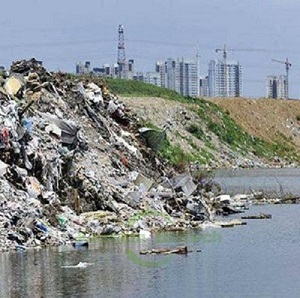
Home Products Sewage Treatment Bacteria Garbage Infiltration Treatment Application of anaerobic bacteria in lan

1.Project summary
The designed treatment capacity of the project is 200m3/d. The treatment process is as follows: regulating tank -- UASB anaerobic tank -- anoxic tank -- aerobic tank -- MBR membrane tank -- evaporator. Due to the load impact in the last water peak period, the removal effect of UASB anaerobic tank was greatly reduced: UASB almost had no treatment effect. In this way, the treatment load of the subsequent AO section is greatly increased, resulting in insufficient dissolved oxygen in the aerobic pool, black water in the pool, and low removal efficiency of COD and ammonia nitrogen. The blockage of MBR film is aggravated, the cleaning is frequent, and the effluent is black, which cannot meet the requirements of the inlet water index of evaporator.
2.efficiency raising target
In view of the reasonable process design of the sewage system of the plant, the fault is mainly in the operation. After repeated investigation and understanding, the customer finally decides to choose our company's high-efficiency anaerobic COD bacterial agent to quickly restore the operation of the UASB system. At the same time, nitrification agent was selected to reconstruct the aerobic pool nitrification system quickly and reduce ammonia nitrogen in the effluent.
Target of efficiency enhancement:
The effluent COD of UASB is less than or equal to 9000mg/L;
MBR membrane effluent COD≤1200mg/L, ammonia nitrogen ≤80mg/L.
3. Solutions
1. Water quality characteristics
The characteristics of landfill leachate are as follows:
(1) There are many kinds of organic pollutants and the water quality is complex
Landfill leachate contains a large number of organic compounds, including organic hydrocarbons and their derivatives, acid esters, alcohols, ketoaldehydes and amides.
(2) The concentration of pollutants is high and the range of variation is large
This characteristic of landfill leachate is unmatched by other sewage. The BOD5 and COD concentration of landfill leachate can reach up to 50,000mg /L and 60,000mg /L, which is mainly produced in the acid fermentation stage with pH reaching or slightly lower than 7, at which time the BOD5 and COD ratio is 0.5-0.6. In general, COD, BOD5 and BOD5/COD decreased with the "age" of the landfill, while alkalinity increased.
(3) Water quality and quantity vary greatly
Landfill leachate water quality and quantity vary greatly, mainly reflected in the following aspects:
(1) The yield varied greatly with seasons, and the rainy season was significantly larger than the dry season;
(2) The composition and concentration of pollutants also change with seasons;
(3) The composition and concentration of pollutants change with landfill time.
(4) High metal content
Landfill leachate contains more than 10 kinds of metal ions. Because domestic garbage is not classified and screened as strictly as some foreign cities, the concentration of metal ions in domestic urban landfill leachate is different from that in some foreign cities.
(5) High ammonia nitrogen content
Municipal landfill leachate is a kind of organic wastewater with complex composition and high concentration of toxic and harmful. High NH3-N concentration is one of the important water quality characteristics of municipal landfill leachate.
Name: Nicole Yu
Mobile:+86 17718148007
Tel:+86 17718148007
Whatsapp:8617718148007
Email:sales@kashionbiotech.com
Add:No.6, Zhanxi Road, Yaohai District, Hefei City, Anhui Province, China.